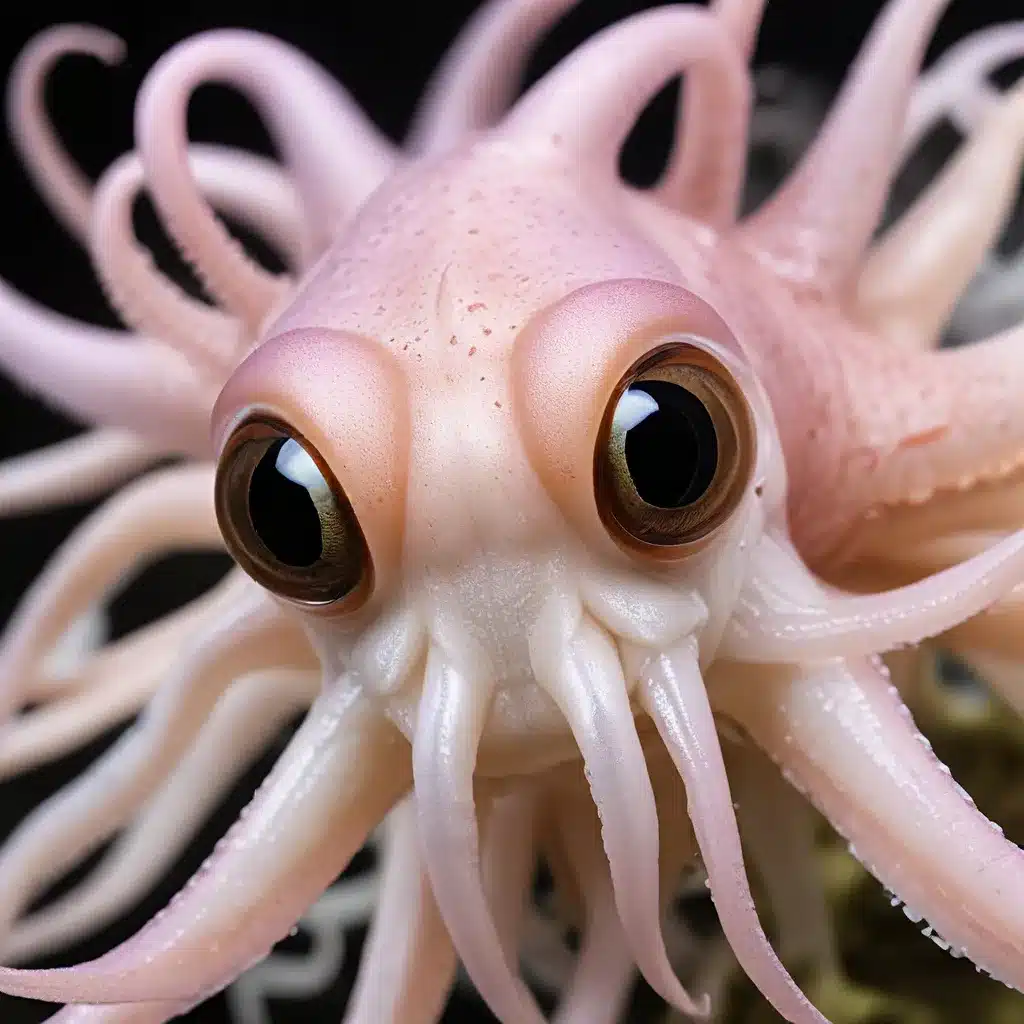
Exploring the Captivating World of Cephalopods
The ocean is a realm of the unknown, teeming with enigmatic creatures that capture our collective fascination. Among these awe-inspiring denizens of the deep, the squid stands out as a true marvel of marine life. From the elusive giant squid, whose very existence was once doubted, to the mesmerizing display of the luminescent Humboldt squid, these cephalopods have long captured the imagination of researchers and enthusiasts alike.
Recent explorations by the National Oceanic and Atmospheric Administration (NOAA) have shed new light on the remarkable adaptations and behaviors of these captivating creatures. By venturing into the dark, uncharted depths of the ocean, scientists have uncovered a wealth of information about the diverse squid species that inhabit our planet’s waters.
Uncovering the Mysteries of the Giant Squid
The giant squid, Architeuthis dux, has long been a subject of fascination and folklore. These colossal cephalopods, which can grow to over 40 feet in length, were once the stuff of legend, with tales of them sinking ships and battling whales. However, recent advancements in deep-sea exploration have finally allowed scientists to capture the first-ever footage of a live giant squid, shedding new light on their elusive behavior and habitat.
Researchers have discovered that these giants of the deep inhabit the mesopelagic and bathypelagic zones, regions of the ocean where sunlight barely penetrates. Adapting to the perpetual darkness, giant squids have developed remarkable sensory capabilities, including bioluminescent organs that can attract prey and communicate with their own kind. Their massive, sharp-toothed tentacles are perfectly suited for snatching unsuspecting fish and other marine life, making them apex predators in their domain.
The Mesmerizing Humboldt Squid
While the giant squid may be the stuff of legend, the Humboldt squid, Dosidicus gigas, is no less captivating. These agile, medium-sized squid, also known as the “jumbo squid” or “red devil,” are renowned for their vibrant displays of bioluminescence and their ability to rapidly change color.
Humboldts are masters of communication, using their bioluminescent organs to signal to one another and coordinate their movements. This allows them to hunt in synchrony, working together to overwhelm and devour their prey. Researchers have also observed these squids engaging in complex social behaviors, such as displaying aggressive posturing and even cannibalizing smaller individuals.
Remarkably, Humboldt squids are capable of “flying” through the water, using their fins to propel themselves at speeds of up to 15 miles per hour. This impressive feat of aquatic agility allows them to ambush unsuspecting fish and evade predators with ease. The Humboldt’s remarkable adaptations and behaviors have captivated scientists, who continue to unravel the mysteries of these enigmatic cephalopods.
Exploring the Depths: Technological Advancements in Squid Research
The study of squids and other deep-sea creatures has been greatly aided by the development of advanced exploration technologies. Remotely operated vehicles (ROVs) and autonomous underwater vehicles (AUVs) have become invaluable tools for researchers, allowing them to venture into the ocean’s darkest depths and observe these remarkable creatures in their natural habitats.
Ocean exploration technologies have not only enabled unprecedented access to the deep sea but have also revolutionized the way scientists gather and analyze data. High-resolution cameras, sonar systems, and specialized sensors allow researchers to capture detailed footage and collect vital information about the behavior, physiology, and ecology of squid species.
Furthermore, the use of genetic analysis and sophisticated imaging techniques has provided new insights into the evolutionary history and taxonomic relationships of cephalopods. This wealth of knowledge is crucial for developing effective conservation strategies and ensuring the long-term survival of these remarkable marine creatures.
Sustainable Aquarium Keeping and Cephalopod Conservation
While the exploration of the ocean’s depths has revealed the wonders of squid species, it has also highlighted the pressing need for conservation efforts. Many squid populations face threats from overfishing, habitat degradation, and the impacts of climate change. As both apex predators and vital components of marine ecosystems, the conservation of squid species is crucial for maintaining the delicate balance of oceanic environments.
For aquarium enthusiasts, the responsible keeping of cephalopods, such as the lesser Pacific striped octopus or the Hawaiian bobtail squid, can play a vital role in raising awareness and promoting conservation. By providing accurate information on proper housing, feeding, and water quality requirements, aquarists can help ensure the well-being of these captivating creatures while fostering a deeper appreciation for their unique adaptations and behaviors.
Furthermore, leading aquarium suppliers are constantly innovating to develop sustainable filtration systems, lighting solutions, and aquascaping techniques that minimize the environmental impact of aquarium keeping. By adopting these eco-friendly practices, aquarists can contribute to the preservation of the marine ecosystems that squid and other cephalopods call home.
Conclusion: Embracing the Wonders of the Squid
The squid, with its captivating array of adaptations and behaviors, stands as a testament to the remarkable diversity of life in our oceans. Through continued exploration, research, and responsible aquarium keeping, we can unlock the secrets of these mesmerizing mollusks and ensure their enduring presence in the marine ecosystems we cherish.
As we delve deeper into the mysteries of the squid, we are reminded of the vast, untapped potential of the ocean and the importance of preserving its fragile balance. By fostering a greater understanding and appreciation for these remarkable creatures, we can inspire future generations to protect and conserve the wonders of the deep, one squid at a time.

